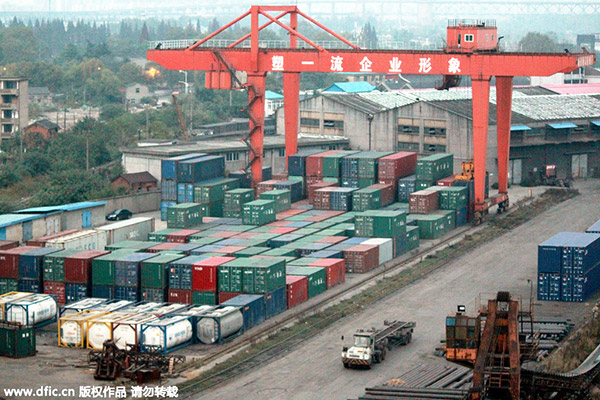Growth challenges and gains
Updated: 2016-01-20 08:18
(China Daily)
|
||||||||
 |
|
A port is pictured in Nanjing, Jiangsu province, Nov 1, 2015. [Photo / IC] |
Since China has been a long-term engine for the global economy, its economic slowdown has understandably sparked worries among investors and policymakers.
But while the slowest pace in a quarter of a century may be an eye-catching summarization of China's 6.9-percent GDP growth in 2015, it fails to underscore China's contribution of about one-fourth of global growth in a tumultuous year. More importantly, it shed light on the progress of its strategic shift away from a dependence on investment and exports toward more sustainable growth driven by consumption and innovation.
While increasing volatility in financial markets and plummeting commodities' prices have made vigilance against a global slowdown necessary, pessimism about the $10-trillion Chinese economy, which expanded twice as fast as the world economy last year, is unwarranted.
Instead, the international community can expect the country to serve as a much-needed source of not-so-fast but steady growth for the world economy, as China has made clear its pursuit of average annual growth of 6.5 percent in the coming five years.
Domestically, a close look at the latest statistics may find problems with traditional growth engines such as industrial overcapacity and realty overstock. Yet there are positive signs that point to China's rise as a consumers' society; a course that will be further accelerated by the sweeping supply-side reform in coming years.
Growth in investment in factories, housing and other fixed assets weakened to 12 percent in 2015, down 2.9 percentage points from the previous year, and the surge in housing prices in a few large cities cannot brighten the overall picture of the domestic property market.
But they are not the whole story, or the major theme of the Chinese economy, which saw its service sector contribute more than half the GDP for the first time in 2015.
Attention should also be paid to the fact that end-user consumption accounted for 66.4 percent of China's full-year GDP of 67.7 trillion yuan ($10.28 trillion), while the country's online retail surged by one-third to 3.9 trillion yuan last year.
It is hard to tell when China's consumption growth will be fast enough to fill the void in demand left by sluggish investment. But that does not amount to a reason to lose confidence in China's self-sustaining growth in the long run.
- A glimpse of Spring Rush: little migrant birds on the way home
- Policy puts focus on genuine artistic students
- Police unravel market where babies are bought, sold as commodities
- More older pregnant women expected
- Netizen backlash 'ugly' Spring Festival Gala mascot
- China builds Mongolian language corpus
- 2 Chinese nationals killed, 1 injured in suspected bomb attack in Laos
- New York, Washington clean up after fatal blizzard
- 'Plane wreckage' found in Thailand fuels talk of missing Malaysian jet
- Washington shuts down govt, NY rebounds after blizzard
- 7 policemen, 3 civilians killed in Egypt's Giza blast
- Former US Marine held in Iran arrives home after swap

 Drone makers see soaring growth but dark clouds circle industry
Drone makers see soaring growth but dark clouds circle industry China's Zhang reaches Australian Open quarterfinals
China's Zhang reaches Australian Open quarterfinals
 Spring Festival in the eyes of Chinese painters
Spring Festival in the eyes of Chinese painters
 Cold snap brings joy and beauty to south China
Cold snap brings joy and beauty to south China
 The making of China Daily's Tibetan-style English font
The making of China Daily's Tibetan-style English font
 First trains of Spring Festival travel depart around China
First trains of Spring Festival travel depart around China
 Dough figurines of Monkey King welcome the New Year
Dough figurines of Monkey King welcome the New Year
 Ning Zetao, Liu Hong named China's athletes of the year
Ning Zetao, Liu Hong named China's athletes of the year
Most Viewed
Editor's Picks

|

|

|

|

|

|
Today's Top News
National Art Museum showing 400 puppets in new exhibition
Finest Chinese porcelains expected to fetch over $28 million
Monkey portraits by Chinese ink painting masters
Beijing's movie fans in for new experience
Obama to deliver final State of the Union speech
Shooting rampage at US social services agency leaves 14 dead
Chinese bargain hunters are changing the retail game
Chinese president arrives in Turkey for G20 summit
US Weekly

|

|







